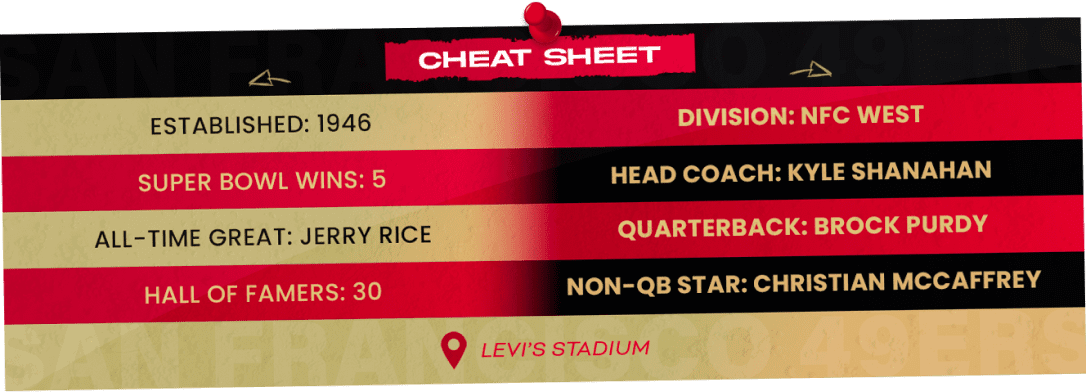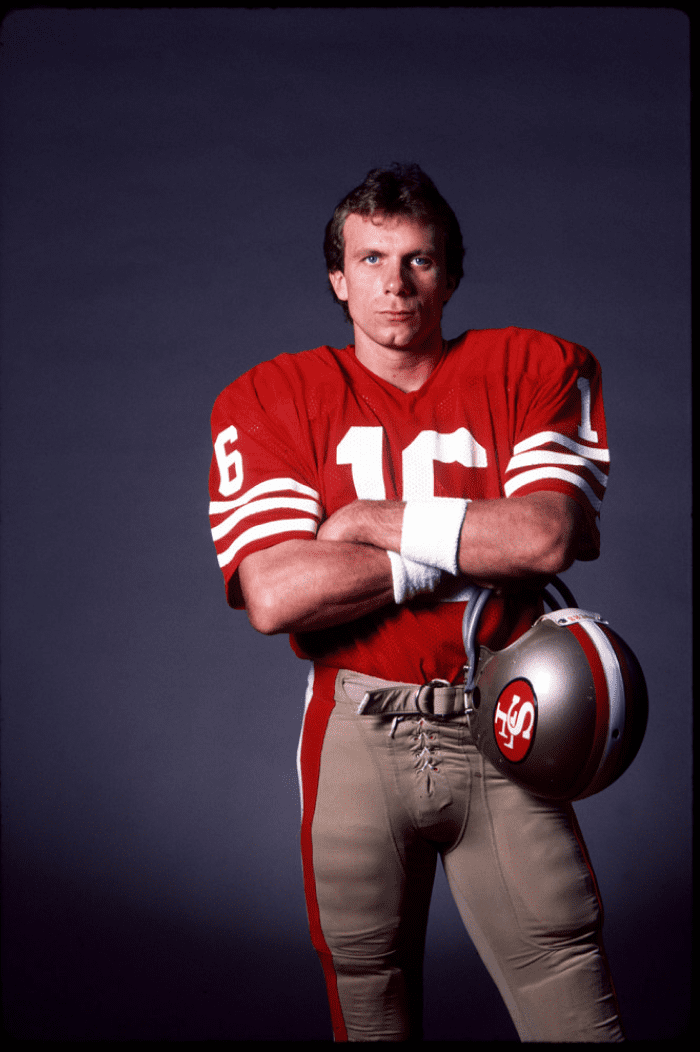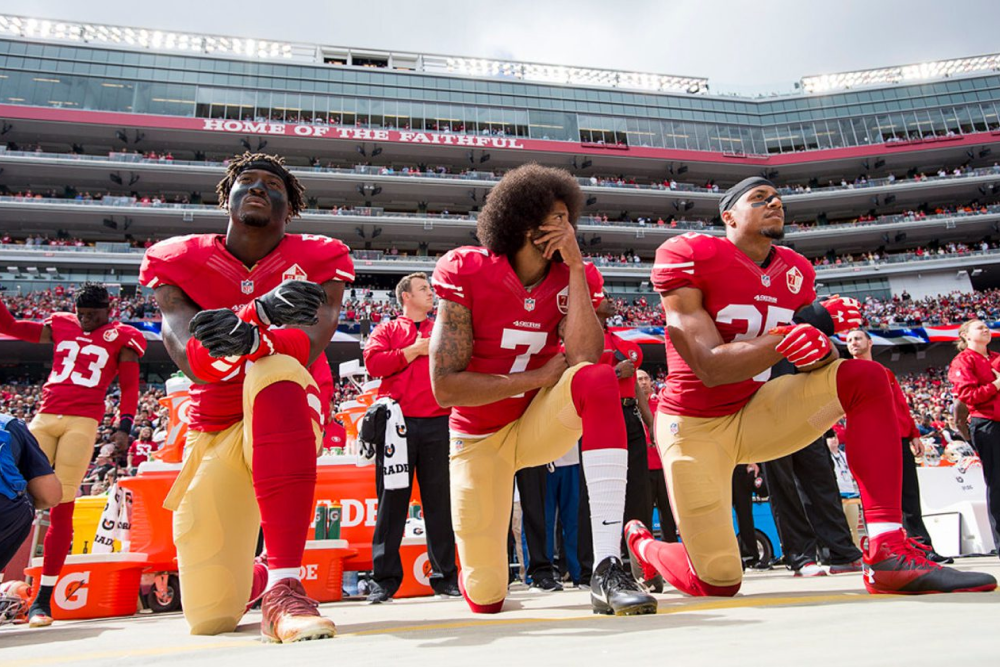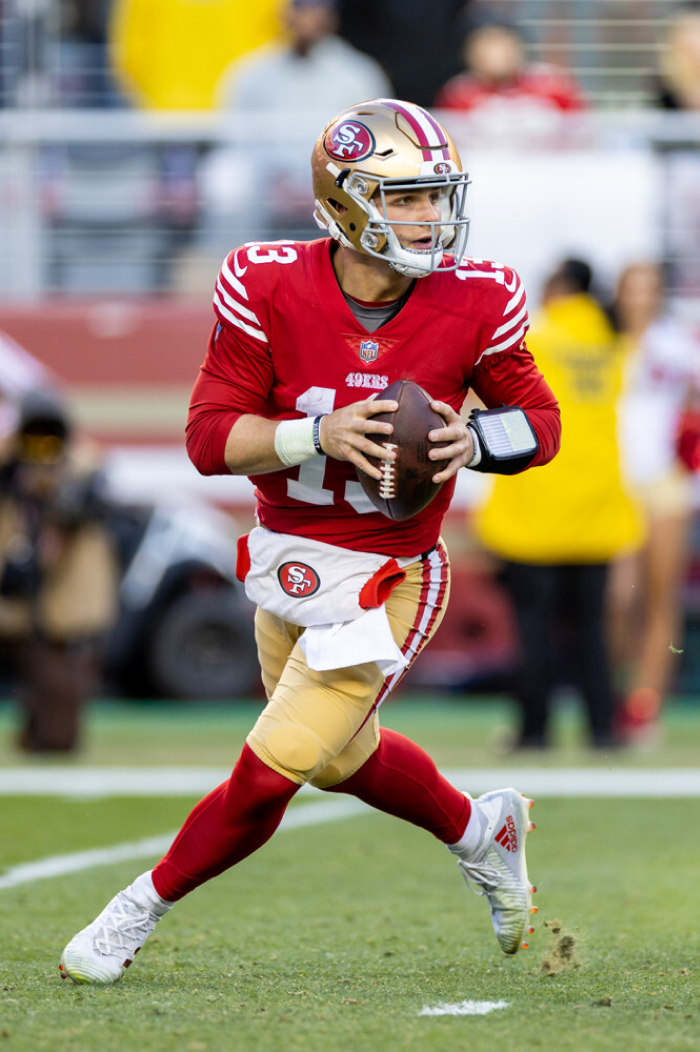
ONE
Founded in 1944 and named after the Americans that travelled to the West Coast during the height of the gold rush in 1849, the San Francisco 49ers became the city’s first major league professional sports team - with their debut season in the AAFC (All-American Football Conference) coming in 1946. After losing the final AAFC Championship Game before the league merged with the NFL, the 49ers only made the playoffs once in the next twenty seasons. However, in the 50s, they became famous for their ‘Million Dollar Backfield’ - featuring: Hugh McElhenny, Joe Perry, John Henry Johson, and Y.A. Tittle.

San Francisco 49ers Flag
TWO
Alongside a move to Candlestick Park in 1971 - a stadium that remained their home for over 40 years - San Francisco made the NFL playoffs in the 1970, 1971, and 1972 seasons. Despite three consecutive trips to the postseason, the 49ers still longed for their first Super Bowl - prompting them to trade for veteran help in the 70s. However the strategy was unsuccessful, with the 49ers winning just two games in 1978. To add insult to injury, part of the process of acquiring said veteran help, included trading away their first round pick in the 1979 NFL Draft - a pick which later became the first overall selection.

Bill Walsh, Head Coach 1979-1988
THREE
Even without the first overall pick, the San Francisco 49ers welcomed two NFL icons to the team in 1979. With the team selecting quarterback Joe Montana in the third round of the draft to partner with new head coach, Bill Walsh. While progress may have been slow in Walsh’s first two years, his system was starting to take shape. The 49ers implemented his ‘West Coast Offense’ - utilising short passes instead of the running game to ‘soften’ defenses. The passing game was dependent on timing and in-game intelligence - rather than arm strength - which suited Montana perfectly.

Joe Montana, Quarterback 1979-1992
FOUR
After drafting Ronnie Lott - one of the game’s greatest-ever safeties - and winning 13 games in the regular season, the 49ers won their first-ever Super Bowl in 1981 - with a 26-21 victory over the Cincinnati Bengals. In 1984, San Francisco became the first team in NFL history to win 15 regular season games before defeating the Miami Dolphins 38-16 in Super Bowl XIX. In the ‘85 Draft, the 49ers selected GOAT wide receiver Jerry Rice - taking their offense to yet another level. With a dramatic win over the Cincinnati Bengals and a 55-10 thrashing of the Denver Broncos, San Francisco secured back-to-back Super Bowl victories in the 1988 and 1989 seasons. Walsh retired after their Super Bowl XXIII victory, so his successor, George Seifert was the coach at the helm for the team’s win over the Broncos.

Jerry Rice, Wide Receiver 1985-2000
FIVE
Many of the NFL’s most iconic moments came thanks to the San Francisco 49ers. In the 1981 NFC Championship Game, the 49ers trailed the Dallas Cowboys 21-27. With 58 seconds remaining - and parked on the Cowboys’ six-yard line - Joe Montana ran to his right before launching the ball high into the end zone. Despite looking out of reach, receiver Dwight Clark leapt into the air and hung onto the ball with his fingertips - scoring the touchdown that took the 49ers to the Super Bowl. ‘The Catch’, as it became known, helped kickstart San Francisco’s dynasty. Another of Montana’s greatest moments came on the game’s biggest stage. With just over three minutes left in Super Bowl XXIII, the 49ers were down 16-13 to Cincinnati. However, no moment was too big for Montana who calmly worked his way down the field before throwing the game-winning touchdown pass with just 34 seconds left in the game. Montana soon gained the nickname ‘Joe Cool’ as a result of his poise when the pressure was on.
SIX
Bill Walsh was worried about Joe Montana’s health after he underwent back surgery in 1986, so the team traded for quarterback Steve Young from the Tampa Bay Buccaneers in ‘87. After four years as Montana’s backup, Young finally got a chance to start for the 49ers in 1991. However, when Montana finally returned from injury, the biggest quarterback controversy in NFL history occurred. The team opted to start Young, who won the first of his two league MVP awards in the 1992 season - resulting in Montana requesting a trade. Despite losing a legend, the 49ers made Super Bowl XXIX in the 1994 season, where Young was magnificent - throwing for six touchdown passes en route to being named Super Bowl MVP as the 49ers crushed the San Diego Chargers, 49-26.

Steve Young, Quarterback 1987-1999
SEVEN
San Francisco remained competitive throughout the rest of Steve Young’s NFL career, but never made it back to the Super Bowl. After Young’s retirement following the 1999 season, San Francisco became considerably less consistent. In 2005, the 49ers chose to draft quarterback Alex Smith, rather than future four-time NFL MVP Aaron Rodgers, with the first overall pick in the draft. However, Smith couldn’t keep up with Rodgers’ success in the league. Things improved when Jim Harbaugh was hired as head coach before the 2011 season. That year, Smith - alongside tight end Vernon Davis, running back Frank Gore, and a defense led by linebacker Patrick Willis - helped the 49ers to their first winning season in nine years. The following season, however, Smith suffered an injury in Week 10 - resulting in second-year quarterback, Colin Kaepernick taking over.

Alex Smith, Quarterback 2005-2012
EIGHT
When Kaepernick first entered the starting lineup, it was thought that his biggest impact would be on the field. In his first two years as the starter, the 49ers went to the NFC Championship Game twice and appeared in their first Super Bowl since the 1994 season. However, it soon became apparent that Kaepernick’s biggest impact would be off the field. In 2016, Kaepernick decided to kneel during the national anthem in protest of police brutality and racial inequality, but was labelled “disrespectful” and “unpatriotic” - even receiving death threats. At the end of the season, Kaepernick opted out of his contract and entered free agency. He hasn’t made an NFL roster since. During the Black Lives Matter (BLM) protests of 2020, Kaepernick became a symbol of the fight against oppression, and various athletes replicated his methods - taking a knee before games to show solidarity with the anti-racism movement.

Colin Kaepernick, Quarterback 2011-2016
NINE
Kaepernick’s story was sandwiched between two Super Bowl losses for San Francisco. In 2012, Harbaugh’s team reached Super Bowl XLVII but lost to the Baltimore Ravens, who were coached by his brother, John. Harbaugh left the team the following season and it would take until 2019 before San Francisco returned to the top of the NFC. Led by new head coach Kyle Shanahan (hired in 2017) tight end George Kittle, and defensive end Nick Bosa, the 49ers took on the Kansas City Chiefs in Super Bowl LIV, but ultimately lost 31-20. In 2022, having lost quarterbacks Trey Lance and Jimmy Garoppolo to injury, the 49ers were forced to turn to rookie quarterback Brock Purdy - that year’s “Mr.Irrelevant”. Against all odds, Purdy took the NFL by storm - becoming the first quarterback to beat Tom Brady in his first career start - before taking his team to within one game of Super Bowl LVII. In 2023, Purdy continued his run of astonishing performances - leading the 49ers’ powerhouse of a roster to Super Bowl LVIII. Despite an agonising overtime loss to Patrick Mahomes and the Kansas City Chiefs in the big game, Purdy and the 49ers look set to dominate the NFC next season.

Brock Purdy, Quarterback 2022-Present
BEFORE YOU GO
San Francisco’s iconic stadium, Candlestick Park, played host to the Beatles’ final ever concert in 1966.

Paul McCartney was the last musician to ever play at Candlestick in 2014, the same year that the 49ers moved to their current home, Levi’s Stadium.

The team’s ownership group - 49ers Enterprises - agreed to take full control of English football club Leeds United in 2023, after originally purchasing a 15% stake in 2018, which was increased to 44% in 2021.










